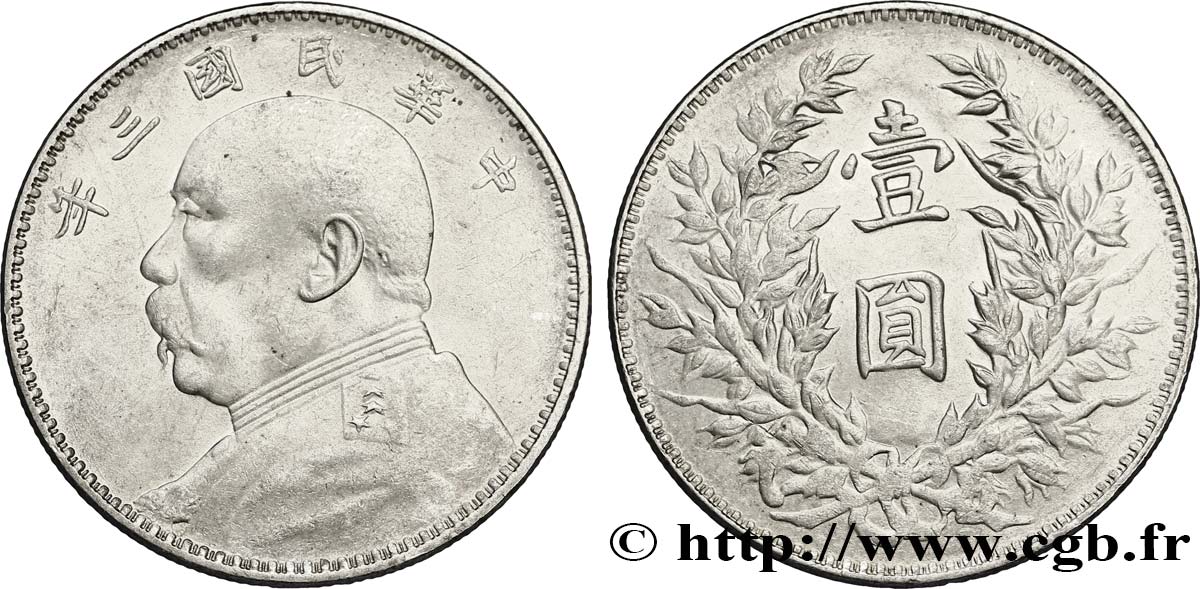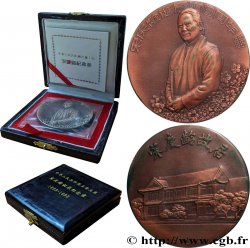- Accueil
- > Archiv
- > Weltmünzen
fwo_308630 - CHINA 1 Yuan Président Yuan Shikai an 3 1914
Nicht verfügbar.
Artikel auf unserem Online-Shop verkauft (2015)
Preis : 145.00 €
Artikel auf unserem Online-Shop verkauft (2015)
Preis : 145.00 €
Type : 1 Yuan Président Yuan Shikai an 3
Datum: 1914
Prägemenge : -
Metall : Silber
Der Feingehalt beträgt : 890 ‰
Durchmesser : 39 mm
Gewicht : 26,72 g.
Rand cannelée
Kommentare zum Erhaltungszustand:
Exemplaire avec tout son brillant d’origine
N° im Nachschlagewerk :
Vorderseite
Beschreibung Vorderseite Portrait de Yuan Shikai à gauche en uniforme.
Rückseite
Beschreibung Rückseite Couronne de feuillage.
Kommentare
Yuan Shikai (1859-1916) est un militaire et homme politique chinois. Homme fort sous le régime impérial des Qing , il négocie avec les révolutionnaires. Ainsi en 1912, il succède à Sun Yat-sen en devenant président de la République de Chine. Grâce à son contrôle sur l’armée, il instaure un régime autocratique. Le 12 décembre 1915, il s’autoproclame Grand Empereur de Chine mais isolé doit abandonner le pouvoir en mars 1916. Il meure d’une hémorragie en juin 1916.
Yuan Shikai (1859-1916) was a Chinese military and political figure. A strongman under the Qing imperial regime, he negotiated with the revolutionaries. In 1912, he succeeded Sun Yat-sen by becoming President of the Republic of China. Thanks to his control over the army, he established an autocratic regime. On December 12, 1915, he proclaimed himself Grand Emperor of China, but in isolation, he had to give up power in March 1916. He died of a hemorrhage in June 1916.
Yuan Shikai (1859-1916) was a Chinese military and political figure. A strongman under the Qing imperial regime, he negotiated with the revolutionaries. In 1912, he succeeded Sun Yat-sen by becoming President of the Republic of China. Thanks to his control over the army, he established an autocratic regime. On December 12, 1915, he proclaimed himself Grand Emperor of China, but in isolation, he had to give up power in March 1916. He died of a hemorrhage in June 1916.








 Berichten über einen Fehler
Berichten über einen Fehler Die Seite drucken
Die Seite drucken Teilen meiner Auswahl
Teilen meiner Auswahl Stellen Sie eine Frage
Stellen Sie eine Frage Einlieferung/Verkauf
Einlieferung/Verkauf
 Details
Details









